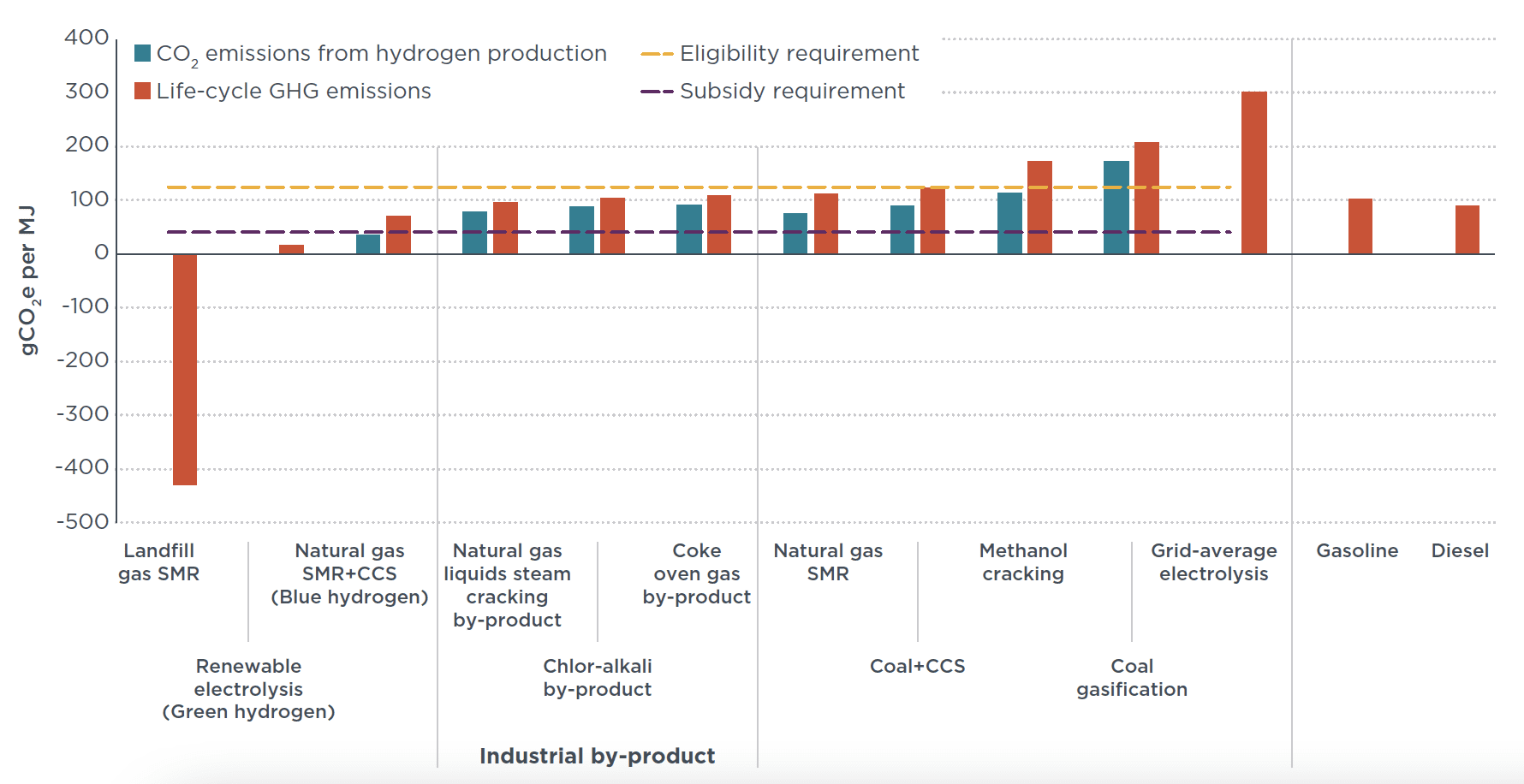Life-cycle greenhouse gas emissions of biomethane and hydrogen pathways in the European Union
White paper
Life-cycle analysis of greenhouse gas emissions of hydrogen, and recommendations for China
This study estimates the carbon intensity of eleven hydrogen pathways in China and compares them to the eligibility requirements for the fuel cell vehicle (FCV) pilot city program in China that promotes the adoption of FCVs and the use of hydrogen fuel. It assesses which pathways can meet the program’s carbon intensity eligibility requirement and which could qualify for the additional clean hydrogen subsidy by meeting a more stringent standard.
The study finds a wide range of carbon intensities across the eleven forms of hydrogen production and use, from the negative carbon emissions profile of landfill gas to coal gasification, whose carbon intensity is greater than that of diesel fuel. (Figure.) It also shows the difference in measuring carbon emissions over the life cycle of hydrogen compared to measuring them at the production stage alone.

Figure. CO2 and life-cycle GHG emissions from eleven hydrogen pathways in China, using GWP-100. Grid-average electrolysis is based on national average grid. System expansion methodology is used for industrial by-product hydrogen.
China’s pilot city program allows the use of hydrogen whose carbon footprint is measured at the hydrogen production stage, rather than across its life cycle. Partly for this reason, the study finds that only hydrogen made from coal gasification is ineligible to be used under the pilot program. Hydrogen made from grid-average electricity even qualifies for the additional clean hydrogen subsidy in the program because it has zero-emissions at production, despite having one of the highest life-cycle emissions among the eleven hydrogen pathways analyzed.
The study recommends that the national and local governments in China consider the use of life-cycle well-to-wheel GHG emissions to evaluate hydrogen in their programs and policies. It also recommends that local governments of selected cities discourage the production and use of coal-based and grid-average electrolysis hydrogen. And it calls for a robust carbon accounting, certification, and verification system for consistent and accurate emissions estimates.
